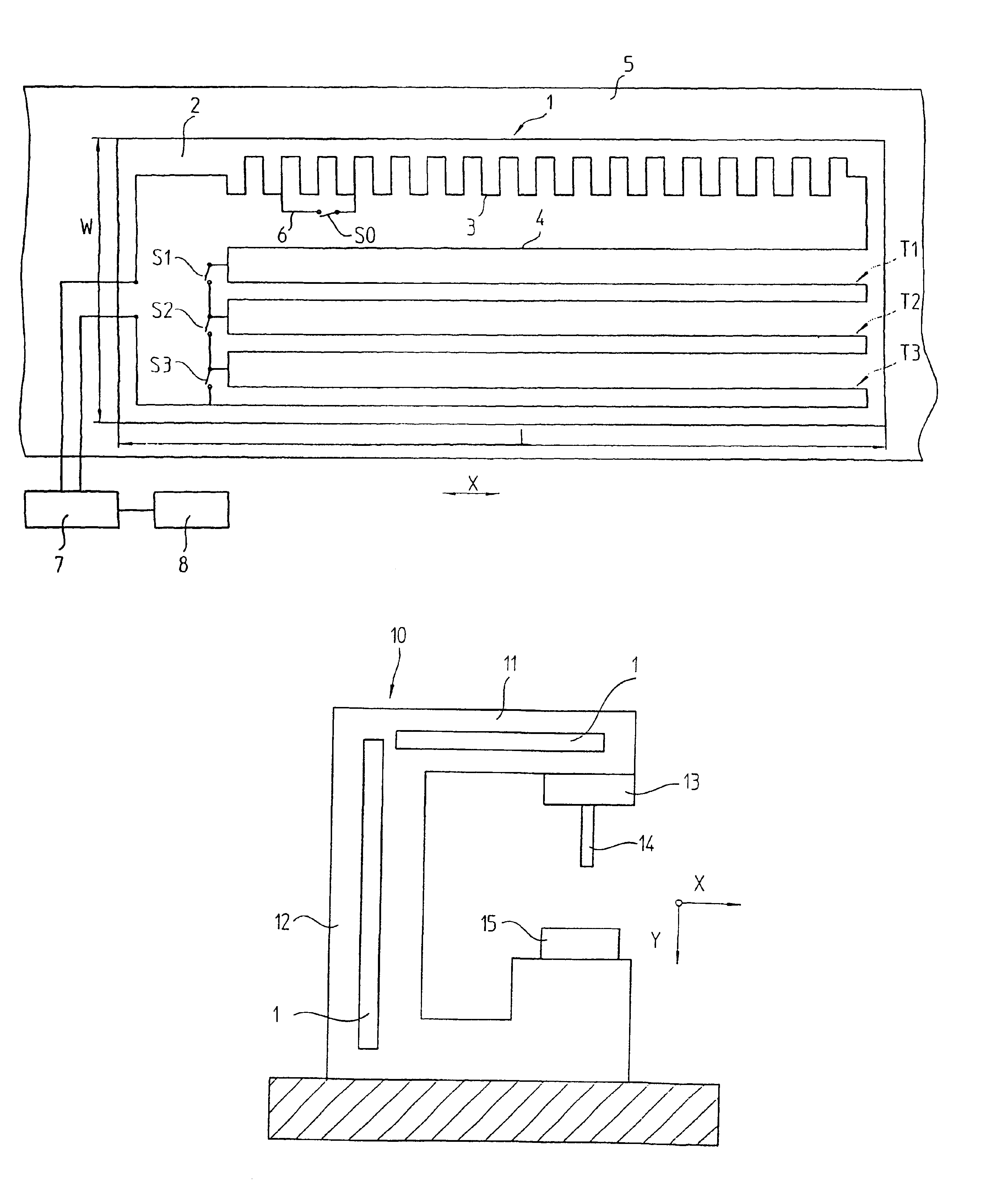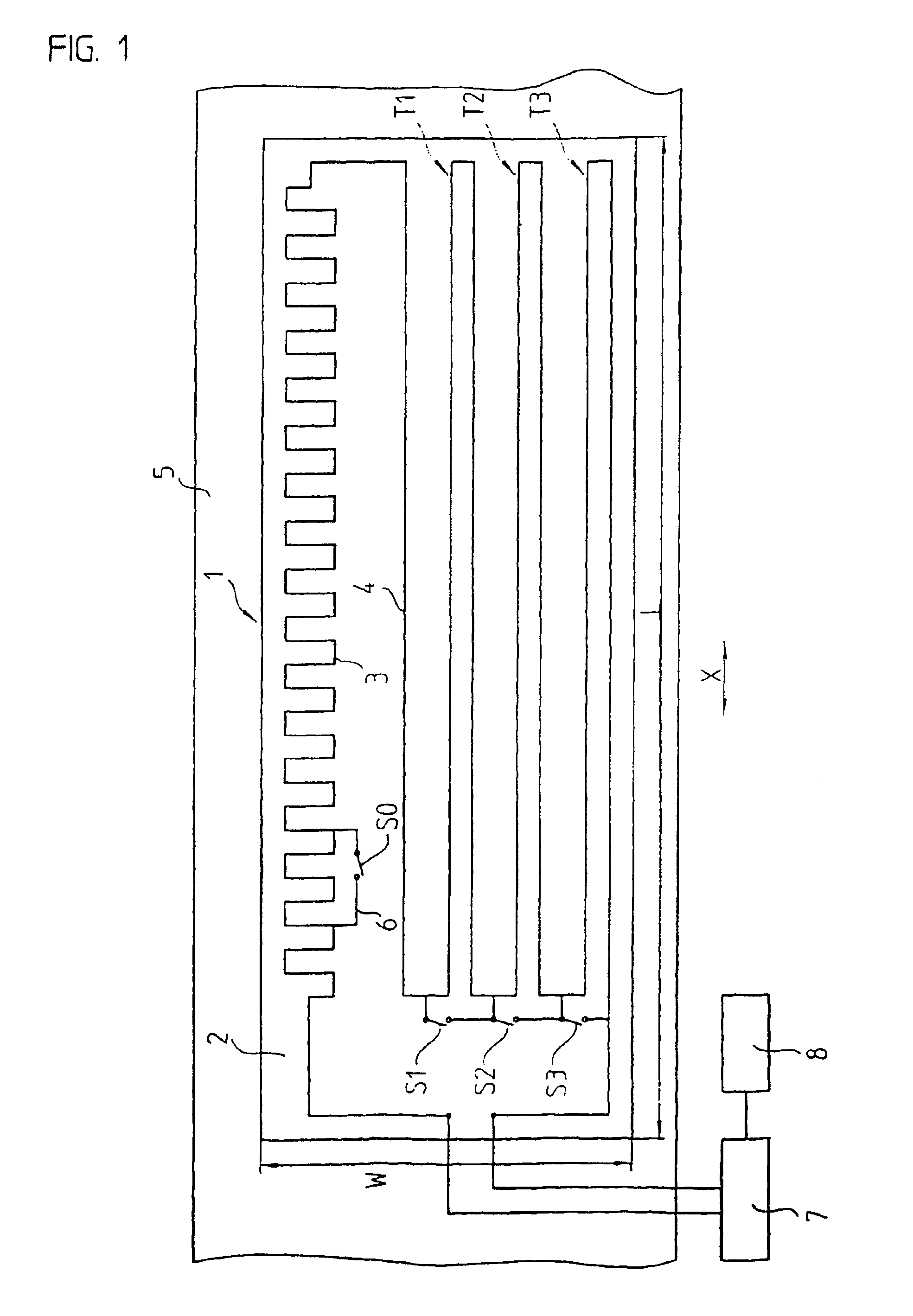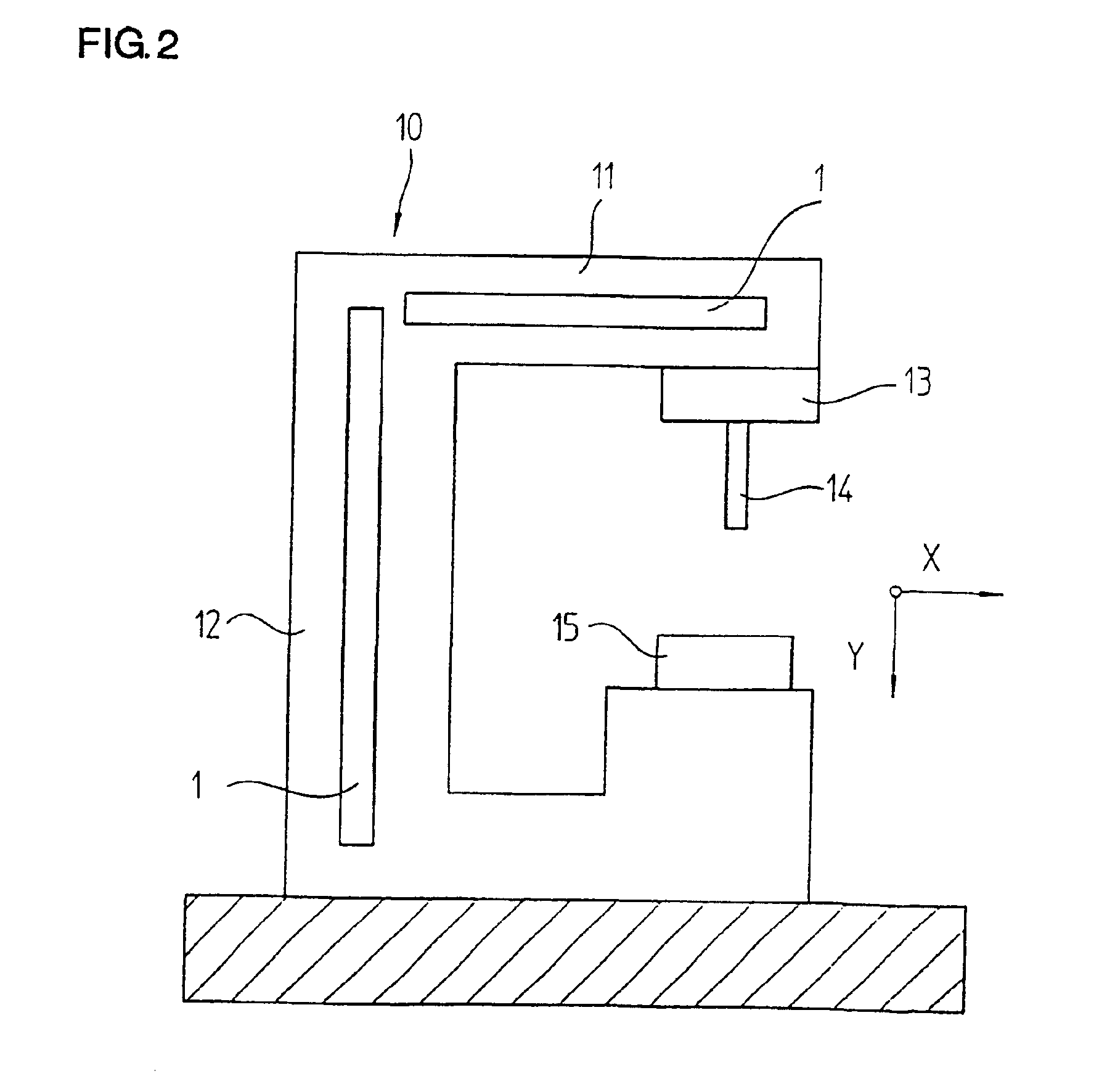Device for detecting a thermal linear dilation on part of a machine
- Summary
- Abstract
- Description
- Claims
- Application Information
AI Technical Summary
Benefits of technology
Problems solved by technology
Method used
Image
Examples
Embodiment Construction
A first simple embodiment of a device for detecting a thermally caused linear expansion is represented in FIG. 1. A temperature sensor 1 includes a printed circuit board substrate 2, which supports a first metallic conductor 3 in the form of a meander-shaped copper track with a return track 4. Let the first metallic conductor 3 have an electrical resistance RO. The trimmer tracks T1 to TN having a resistance of R1 to RN, which are also made of copper tracks and are switched in series with respect to the first metallic conductor 3, can be individually short-circuited by a solder spot via switches S1 to SN, embodied as interrupted copper tracks. In the process, the total resistance of the temperature sensor 1 is respectively reduced by the resistance R1 to RN of the short-circuited trimmer tracks T1 to TN.
In an advantageous manner the resistance value R1 to RN of the individual trimmer tracks T1 to TN doubles, so that R(N+1)=2 * RN applies. Thus, a resistance value between R0 (all tri...
PUM
| Property | Measurement | Unit |
|---|---|---|
| Temperature | aaaaa | aaaaa |
| Length | aaaaa | aaaaa |
| Electrical resistance | aaaaa | aaaaa |
Abstract
Description
Claims
Application Information
 Login to View More
Login to View More - R&D
- Intellectual Property
- Life Sciences
- Materials
- Tech Scout
- Unparalleled Data Quality
- Higher Quality Content
- 60% Fewer Hallucinations
Browse by: Latest US Patents, China's latest patents, Technical Efficacy Thesaurus, Application Domain, Technology Topic, Popular Technical Reports.
© 2025 PatSnap. All rights reserved.Legal|Privacy policy|Modern Slavery Act Transparency Statement|Sitemap|About US| Contact US: help@patsnap.com



